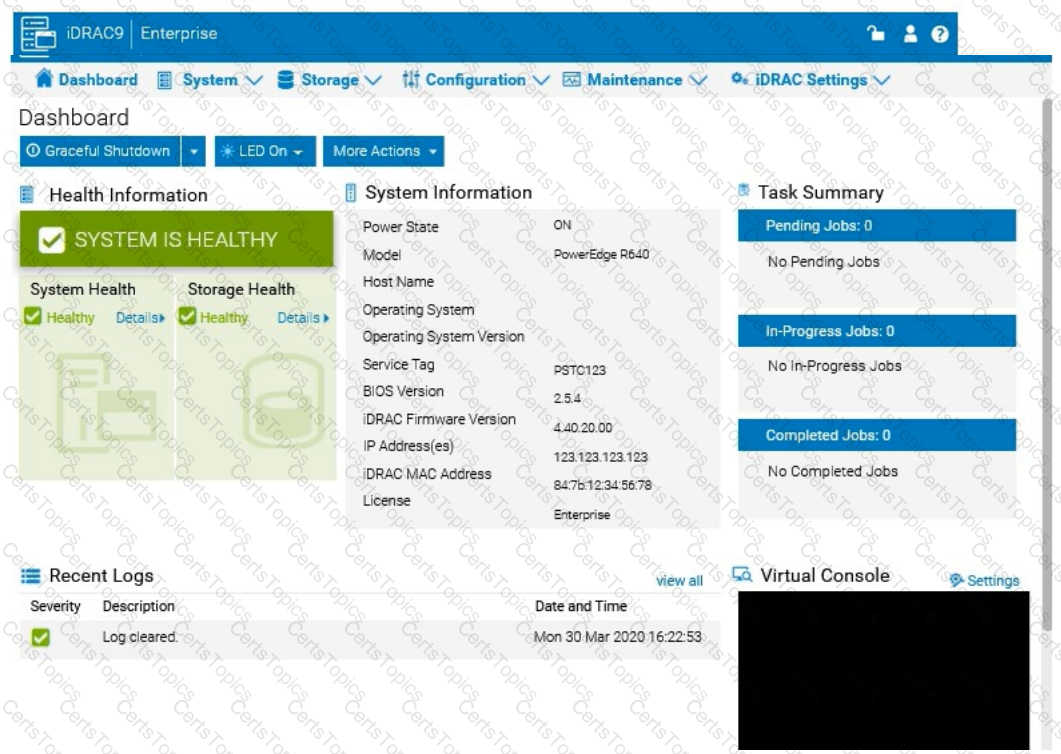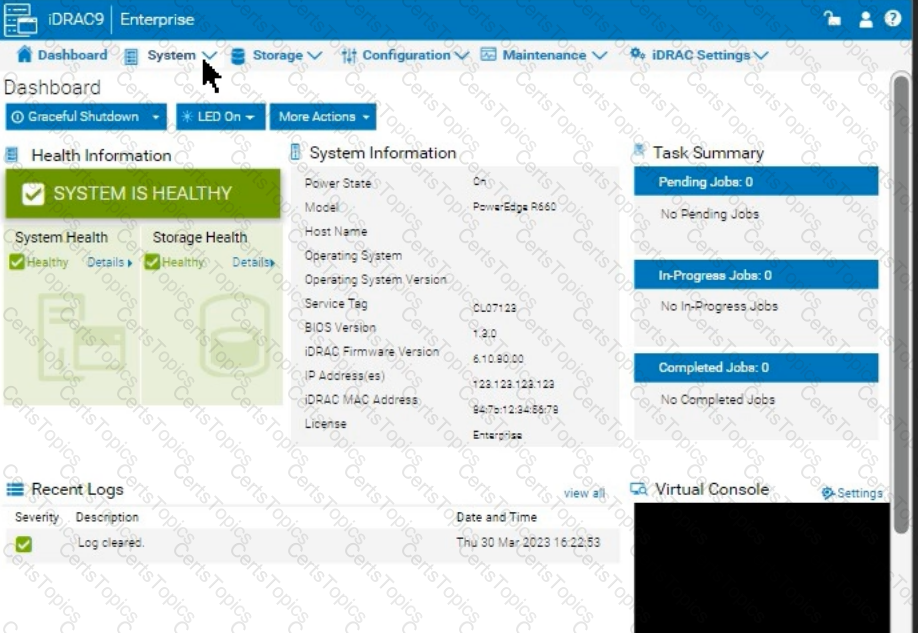EMC Related Exams
D-PE-OE-23 Exam







A customer wants to change the PSU configuration to a 2+0 with PSU2 as the primary. Use the simulator to complete this task in the iDRAC UI.

Click the Launch Simulator button.
Using the iDRAC UI, what is listed as the Cache Memory Size for the H965i storage controller?
Note: It is necessary to close (x) the simulator window before you can select a response to this question.

A customer wants to optimize GPU density for maximum performance with high-capacity storage.
Which PowerEdge model should be recommended?